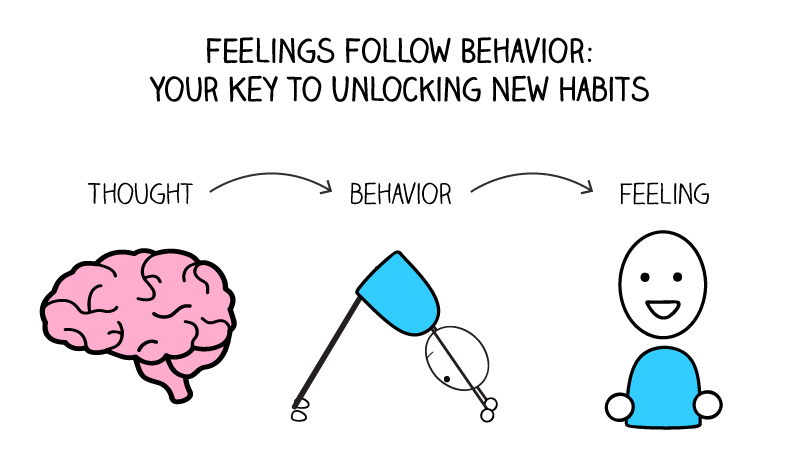
 By
Venita Adams
By
Venita Adams

Last week, I was chilling on the couch, catching the Steve Harvey show. They were talking about celebrities living two lives – the public one and their behind-the-scenes struggles.
Man, that episode of the show was fire. It got me thinking about that old saying, “Fake it till you make it.“

You’ve probably heard it too – the idea that if you want to be something, just act like you already are. For example, if you’re after confidence, start talking louder, standing taller, and grinning more until you feel the part. Want success? Just dress sharp, hustle harder, and network like crazy until success lands on your doorstep.
That`s the whole idea behind the ‘fake it till you make it’ mantra. But is this thing legit, or is it just a slick phrase? Can acting the part change your game, and what’s the catch?
In this post, we’re digging into the nitty-gritty. We’ll suss out the science behind it – how pretending to be someone else can mess with your brain and maybe even upgrade your life. Let`s figure out together if this saying is a game-changer or just another hype.

According to a psychological theory called self-perception theory, we often infer our attitudes and emotions from our behaviors and expressions, rather than the other way around. In simpler words, we don’t always act because we feel a certain way, but we sometimes feel a certain way because we act.
For example, if you smile, you may feel happier, not because you are happy, but because you are smiling. If you nod, you may agree more, not because you agree, but because you are nodding. If you act confident, you may feel more confident, not because you are confident, but because you are acting confident. Get it?
This is supported by several studies that show how our behaviors and expressions can affect our feelings and thoughts. For instance, one study found that people who held a pen in their mouth in a way that forced them to smile reported feeling more amused while watching a funny video, than those who held the pen in a way that forced them to frown.

Another study found that people who adopted a high-power pose, such as standing with their hands on their hips and their feet apart, reported feeling more confident, dominant, and risk-taking, than those who adopted a low-power pose, such as sitting with their arms crossed and their legs together.
These studies suggest that fake it till you make it can influence our self-perception, by creating a positive feedback loop between our actions and feelings.
By acting as if we already have or are what we want to be, we can trick our brain into believing that we actually have or are what we want to be, and thus feel more positive and motivated to pursue our goals.
But faking it till you make it does not only affect our self-perception, it also affects our brain chemistry, neural pathways, and neuroplasticity, which are the processes that regulate our mood, cognition, and behavior.
By acting as if we already have or are what we want to be, we can stimulate the production of hormones and neurotransmitters, such as dopamine, serotonin, oxytocin, and endorphins, that can boost our happiness, pleasure, social bonding, and pain relief. We can also strengthen the connections between the neurons in our brain, which can enhance our learning, memory, creativity, and resilience. Additionally, we can also change the structure and function of our brain, which can improve our mental health and well-being.
The perks of embracing the “fake it till you make it” mindset are pretty sweet. Check these out:
It can also help us achieve our goals and dreams, by making us more confident, competent, and successful in our endeavors.
Many successful people have used it to overcome their fears, doubts, and insecurities, and to reach their full potential. For example, Oprah Winfrey, one of the most influential and wealthy media personalities in the world, used fake it till you make it to overcome her childhood trauma, poverty, and discrimination, and to become a powerful and inspiring leader, philanthropist, and role model.

One of the most visionary and innovative entrepreneurs in history, Steve used it to overcome his lack of formal education, experience, and resources, and to create revolutionary products and services, such as the iPhone, the iPad, and iTunes.

Muhammad Ali, one of the greatest and most celebrated boxers of all time, used it to overcome his physical and mental challenges, and to become a world champion, a civil rights activist, and a cultural icon.

One of the most popular and influential social psychologists and TED speakers, Ammy used it to overcome her brain injury, impostor syndrome, and social anxiety, and to become a renowned researcher, author, and educator.
These are just some of the examples of how fake it till you make it can help us achieve amazing things in life.
Its interesting to note that several high profile celebrities have successfully used this ‘fake life’ approach to turn their fortunes around. But how can YOU also turn this “fake it till you make it” approach into a game-changer for your own life? Here’s the lowdown with some practical tips:
2. Visualization Techniques:
3. Mastering Body Language:
4. Leveraging Social Proof:
You can use any one of the above mentioned tactics or a combination – it doesnt really matter. Whether you’re talking to yourself in the mirror, daydreaming about your success, striking power poses, or letting social proof do the talking – whatever you choose. What matters is sticking to a plan and following it consistently. Soon, you`ll be able to successfuly adopt the “fake it till you make it” mantra into a bona fide strategy for crushing your goals.

While “fake it till you make it” can be a useful tool, it’s no magic bullet. Let’s check out some cautions:
2. Dishonesty Hazards:
3. Ethical Quandaries:
4. Harmful Pretenses:
My viewpoint is that living a fake life can be a nifty trick, and it’s crucial to be mindful of its limits. Overreaching into unrealistic, dishonest, unethical, or harmful territories can lead to a host of problems. It’s like walking a tightrope – balance is key.





Never miss an important update. Be the first to receive our exclusive beauty tips straight into your inbox.